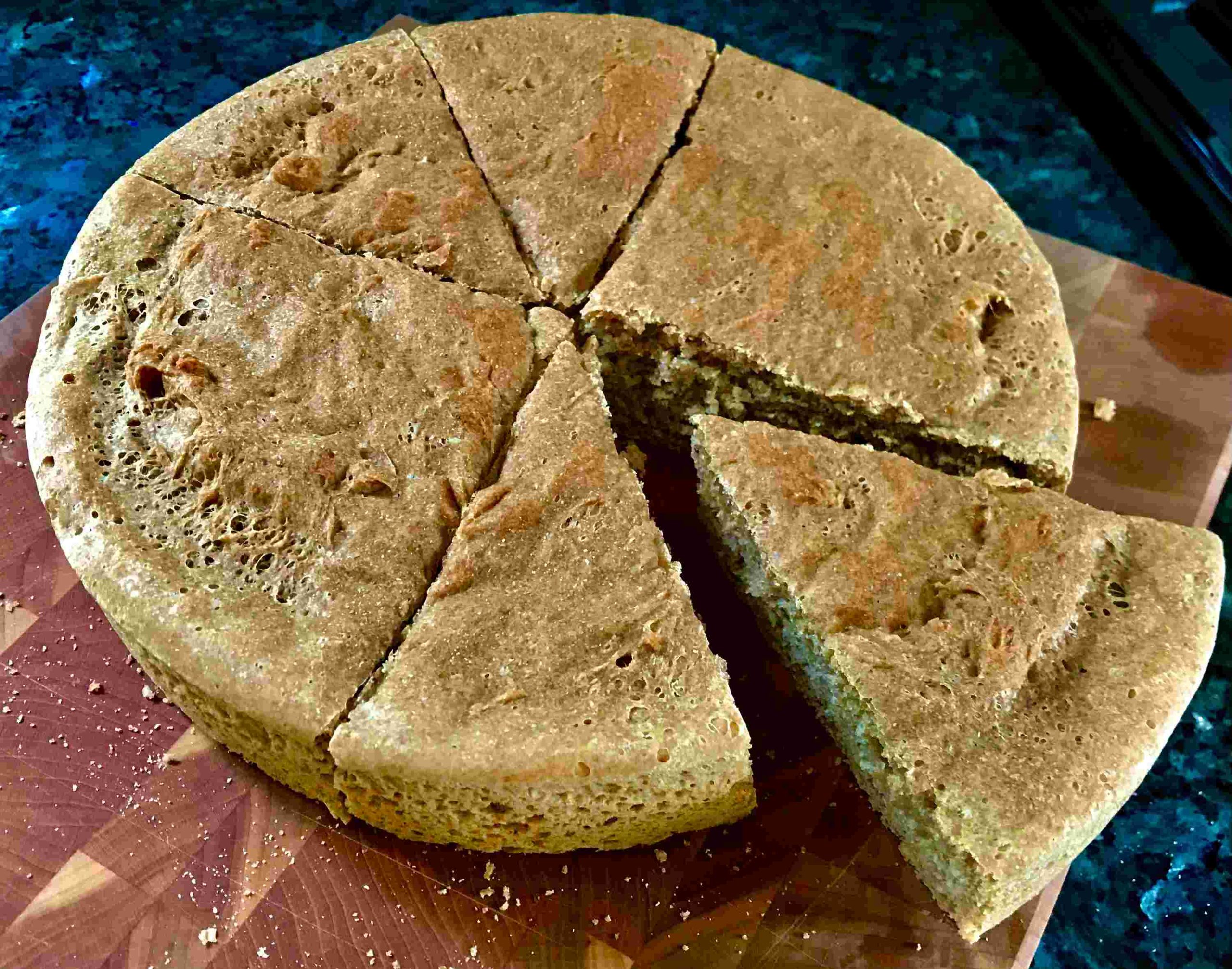
In the mid first century AD, when my novels Thief of Corinth, Daughter of Rome, and Jewel of the Nile take place, most Romans would have purchased their bread at public bakeries. Few people owned the huge specialized ovens needed for baking bread and found it more convenient to visit a bakery, or to bake their bread in large, public ovens. One of the most popular breads was the quadratus, a round yeasted bread which received four shallow cuts before baking, segmenting it into 8 pieces. We know what this bread looks like, because a number of intact loaves were discovered in Pompeii, preserved in the ashes of Mt. Vesuvius.
To feed the sprawling city of Rome, the Romans imported wheat in large quantities from around the world, especially Egypt. Our white or even wheat flour is very different from the flour people ate two thousand years ago. For this recipe, I used organic spelt flour, which is much kinder to your digestion, and a lot healthier for you as well.
To make the recipe easier for the modern baker, I used active dry yeast. But if you want to be closer to the Romans, use your own fresh yeast. I couldn’t find a surviving quadratus recipe. Most of the food geeks out there just made up their own recipe and made it look like a quadratus. I experimented with a Bob’s Red Mill spelt bread recipe, and after some adjustments, came up with this.
5 ½ cups spelt flour
2 cups warm water (120 F – 130 F)
1 Tbsp active dry yeast
¼ cup olive oil
½ cup honey
½ Tbsp sea salt
2 X 8” cake pans, buttered
In a large glass bowl, pour water. Monitor your temperature to ensure it is not too hot or cold. Add yeast and stir with wooden spoon until yeast is properly dissolved. Add olive oil, honey and salt and stir.
Add 1/3 of the flour and mix until smooth. Mix 1/3 more. Setting aside 2-3 Tbsp of flour, mix the rest of the flour and begin to knead on a floured surface. Knead by hand for 7 minutes. Let your dough rise at room temp. for at least an hour. Dampen a clean cloth and cover it as it rises.
Using a scale, Divide your dough into two equal parts. You can use a stretch and fold method, and using reserved flour, shape your dough into two loaves. Place them into greased pans. Cover with damp cloth and allow to rest for another hour.
Preheat oven to 360 F, convection if you have it.
When the dough is risen, use a large knife to make four shallow intersecting cuts across the bread. For an authentic look, tie kitchen string around the top of the dough. I gave up doing this after a few trials. It didn’t stay on properly, and didn’t do much for the bread. Some food historians suspect that Roman bakers shaped their dough in a pan, but baked it free, and the string might have helped to keep the dough’s shape.
Bake for 50-60 minutes. Bread pulls away from the sides when ready.